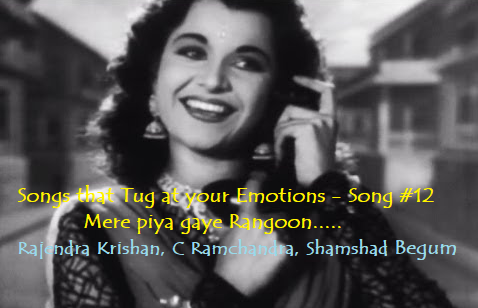The twelfth day of songs in this series.
Today, we take up a song by our fourth female singer after Lata Mangeshkar, Asha Bhosle and Suman Kalyanpur: Shamshad Begum. She was one of the first playback singers in the Hindi films industry. How early? Well, Madan Mohan and Kishore Kumar used to sing as chorus boys in her songs.
I have been giving you Raaga Based Songs of the Day (eg, ‘Raaga Based Song Of The Day #52’) for the last nearly three months now. Many of you, who know your music well, have at times pointed out that a particular song, though ostensibly close to one raaga has traces of other raagas or has deviated substantially from the chosen raaga. I have readily admitted that, pointing out that it is not the job of the film songs composers to stick to the purity of any raaga. Their job is to produce tunes that would be popular and would tug at the emotions of the listeners.
With that in mind, I started a new series eleven days ago to give you songs that tug at your emotions even when they are not based on any raagas.
These are the songs that stay in the creases of your mind long after you last heard them, somewhat like the strains of the song of The Solitary Reaper by William Wordsworth.
I also feel that these are the songs that make you wonder whether the lyrics influenced you more or the composition or is it the composition that made you look at the beauty of the lyrics?
The first of these was put together by lyricist Shailendra and composer Salil Chowdhury and singer Talat Mahmood for the 1957 Dulal Guha movie Ek Gaon Ki Kahani starring Talat Mahmood, Mala Sinha and Abhi Bhattacharya: Raat ne kyaa kyaa khwaab dikhaaye (‘Songs That Tug At Your Emotions – Song #1‘).
Our last one, that is the tenth one, was put together by lyricist Upendra, composer Dulaal Sen and singer Suman Kalyanpur for the 1959 unreleased movie Black Prince: Nigaahen na phero chale jaayenge hum (‘Songs That Tug At Your Emotions – Song #11’).
Today, we shall take up a song from the 1949 HS Rawail movie Patanga that starred Nigar Sultana, Shyam, Yakub and Gope. The song itself is picturised on Nigar Sultana and Gope. The song was put together by Rajendra Krishan as lyricist, C Ramchandra as composer and Shamshad Begum as singer. The male voice on the phone in the prelude of the song is that of C Ramchandra though there are people who have contested it. I am forever grateful to the director Harnam Singh Rawail as he directed the 1963 movie Mere Mehboob, which has the best song of the combination of my favourites Shakeel Badayuni, Naushad Ali and Mohammad Rafi: Mere mehboob tujhe meri mohabbat ki kasam.
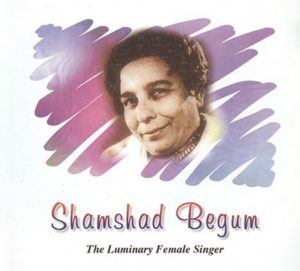 Shamshad Begum, as I have already said here, was one of our first playback singers. She was born on 14 April 1919 in Lahore. Most of you who know your history would recall that the day prior to that was the day of the Jallianwala Massacre in Amritsar, just 50 Kms from the place where she was born. She was from a conservative Muslim family. Two events in her life went against the family traditions. One was, when her uncle, impressed by her voice, took her, at the age of 12 years only, to cut records with musician Ghulam Haider and he signed her up for twelve songs with similar facilities that he gave to major singing stars. Her father Miya Hussain Baksh made peace with her singing on a condition that she would record her songs in burqa and never allow herself to be photographed. The second was even worse. At the age of 13 years she fell in love with a Hindu, Ganpat Lal Batto, and married him within two years (those days marriages, especially for girls used to be early). The rest of her biography reads like a Hindi film story. Her love life and her career boomed, courtesy the famous director Mehboob Khan (founder of Mehboob Studio in Bandra, Mumbai and maker of such movies as Andaz (1949), Mother India and Son of India) who brought her to Bombay. But then, fate played its cruel card in 1955 when her husband met with an accident and died. Shamshad Begum was so much in love with him that the shock of losing him made her listless and withdrawn. She preferred to become a recluse rather than continue with her singing in films. Shamshad Begum was one singer who opted out of her singing at the height of her popularity. For her, family life was more important than popularity.
Shamshad Begum, as I have already said here, was one of our first playback singers. She was born on 14 April 1919 in Lahore. Most of you who know your history would recall that the day prior to that was the day of the Jallianwala Massacre in Amritsar, just 50 Kms from the place where she was born. She was from a conservative Muslim family. Two events in her life went against the family traditions. One was, when her uncle, impressed by her voice, took her, at the age of 12 years only, to cut records with musician Ghulam Haider and he signed her up for twelve songs with similar facilities that he gave to major singing stars. Her father Miya Hussain Baksh made peace with her singing on a condition that she would record her songs in burqa and never allow herself to be photographed. The second was even worse. At the age of 13 years she fell in love with a Hindu, Ganpat Lal Batto, and married him within two years (those days marriages, especially for girls used to be early). The rest of her biography reads like a Hindi film story. Her love life and her career boomed, courtesy the famous director Mehboob Khan (founder of Mehboob Studio in Bandra, Mumbai and maker of such movies as Andaz (1949), Mother India and Son of India) who brought her to Bombay. But then, fate played its cruel card in 1955 when her husband met with an accident and died. Shamshad Begum was so much in love with him that the shock of losing him made her listless and withdrawn. She preferred to become a recluse rather than continue with her singing in films. Shamshad Begum was one singer who opted out of her singing at the height of her popularity. For her, family life was more important than popularity.
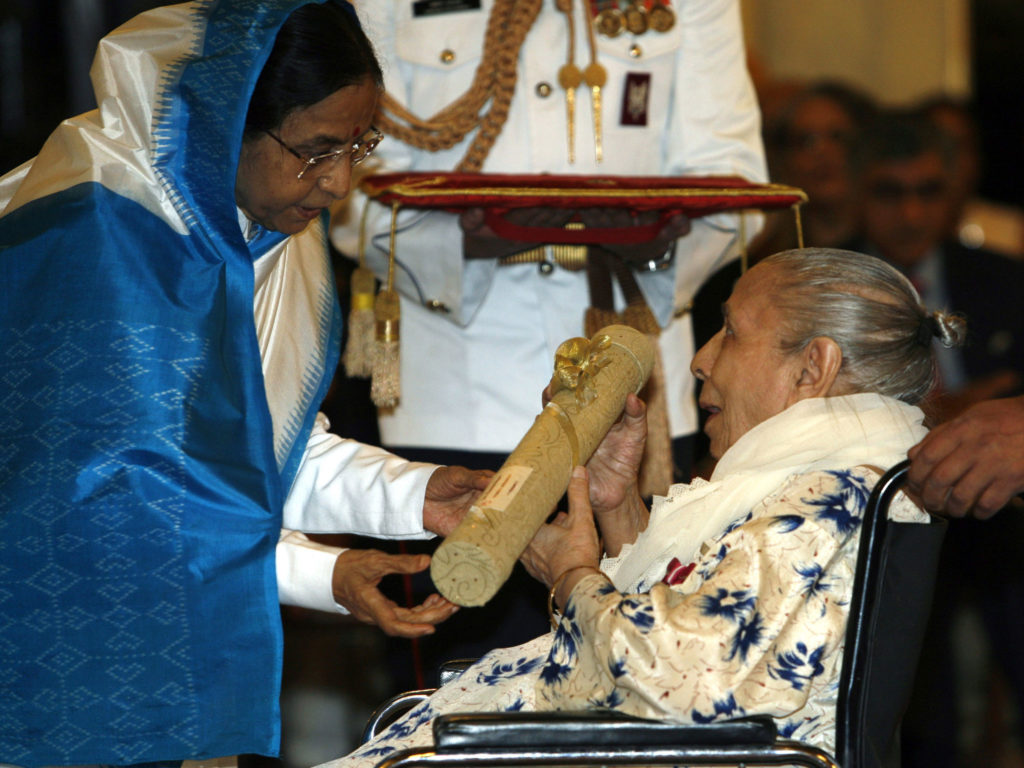
Mehboob Khan first made her sing in his 1943 movie Taqdeer (the debut movie of Nargis) (She had, just to remind you, started singing for Ghulam Haider for Khazanchi when she was only 12 and Khandan one year later). She sang nine out of the ten songs of the movie Taqdeer composed by Rafiq Ghaznavi. She was an overnight celebrity in Bombay now. Even though Mehboob Khan took up singing stars such as Noorjahan, Surendra and Suraiya for his 1946 movie Anmol Ghadi, she also sang Udan khatole pe ud jaayun with Zohrabai Ambalewali. She came in touch with composer Naushad Ali in that movie and that started a very fruitful professional relationship. For example, she sang with Lata Mangeshkar in 1949 Mehboob Khan movie Andaz: Dar na mohabbat karle, a song composed by Naushad. Indeed, Naushad, in an interview, admitted that initially it was Shamshad Begum’s singing that made him famous as a composer. She was much in demand by other composers at this stage and the present song is from the movie Patanga, released in the same year as Mehboob Khan’s Andaz and the composer was C Ramchandra.
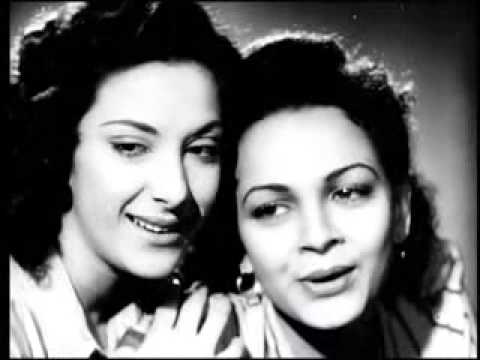
Some of my favourite songs of Shamshad Begum are: Badhi mushkil se dil ki beqraari ko qaraar aaye (Naghma), Bachpan ke din bhula na dena and Chaman mein reh ke veeraana (Deedar), Buujh mera kya naam re and Kahin pe nigaahen kahin pe nishaana (the debut song of Waheeda Rehman) ( both from C.I.D.), Chhod babul ka ghar and Milate hi aankhen dil hua deewana kisi ka (Babul), Dukh bhare din beete re bhaiya, Gaadi waale gaadi dheere haank re, Holi aayi re Kanhaai and Pi ke ghar aaj pyaari dulhaniya chali (Mother India), Duur koi gaaye dhun ye sunaaye (Baiju Bawra), Ek do teen aaja mausam hai rangeen (Awaara), Ham gham ka fasaana duniya ko suna denge (Dard, Jaate jaate ek nazar bhar dekh lo (Qawali Ki Raat), Kabhi aar kabhi paar laaga teer-e-nazar (Aar Paar), Kajra mohabbat waala (Kismat), Main bhnwara tu hai phool ye din mat bhool (Mela), the debut movie of my favourite lyricist Shakeel Badayuni), Reshami salwar kurta jaali ka (Naya Daur), Sainya dil mein aana re (Bahaar), and Teri mehfil mein kismat aazma kar ham bhi dekhange (together with Lata Mangeshkar in Mughal-e-Azam).
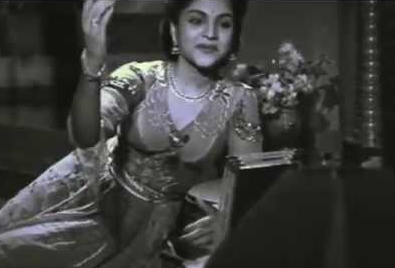
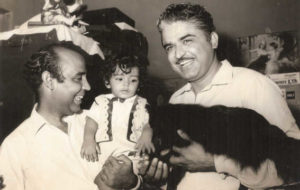
Lets now take up Lyricist Rajendra Krishan and Composer C Ramchandra. Rajendra Krishan shares his birthday with me: 6th June. He too spent his youth in Shimla. I have as many as four blog-posts on him; and not because of these coincidences or because he won Rupees 64 Lakhs as Jackpot in horse-racing (Please see: ‘The Best Songs Of Rajendra Krishan, The Richest Lyricist’, ‘Part II’, ‘Part III’ and ‘Part IV’). Some of Lata Mangeshkar’s best songs have been penned by him and composed by Madan Mohan. The best thing about him was that he could pen both serious and sad songs such as Anarkali songs: Mohabbat aisi dhadkan hai, Ye zindagi usi ki hai, and Zindagi pyaar ki do chaar ghadi hoti hai as well as Westernised Songs, for example in Bhagwan Dada’s Albela (Shola jo bhadake, Sham dhale khidaki tale, and Dil dhadake nazar sharmaaye). His Jahan Ara songs (Main teri nazar ka saroor hoon, Teri aankh ke aansu pi jaayun, and Phir wohi shaam wohi gham wohi tanhaayi hai) and Adalat Songs (Unako ye shikayat hai hai ke ham kuchh nahin kehte, Youn hasraton ke daag mohabbat mein dho liye, and Jaana tha hamase door) are in sharp contrast with his, for example, Padosan songs (Ek chatur naar and Mere saamne wali khidaki mein). Some of my other favourites of his are in Dekh Kabira Roya (Meri veena tum bin roye, Hamase aay ana gaya, Kaun aaya mere man ke dwaare), Nagin (All songs including Jaadugar sainya), Main Bhi Ladaki Hoon (Chanda se hoga wo pyara), Manmauji (Chanda ja, and main to tum sang nain mila ke) and Nai Roshnai (Kis tarah jeete hain ye log bata do yaaro).
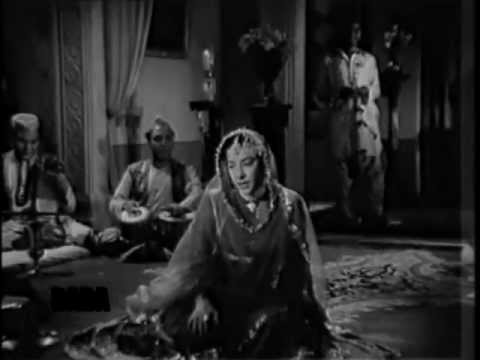
Ramchandra Narhar Chitalkar or C Ramchandra lived between 12 Jan 1918 and 5 Jan 1982. Whatever I said about Rajendra Krishan is true for him as well; ie, he could compose super slow sad songs (Tum kyaa jaano tumhaari yaad mein ham kitana roye) to those Shola jo bhadake type Albela songs. In addition, he could compose real classical music and songs for movies such as V Shantaram’s Navrang (Tu chhupi jain kahan, Are jaa re jhat natkhat, and Shyamal shyamal baran). C Ramchandra covered himself in glory by composing Kavi Pradeep’s Ai mere watan ke logo, which later became the signature song of the woman and singer he loved: Lata Mangeshkar. In addition to composing, he sang a number of songs with her. Here is one of them for the 1955 Dilip Kumar and Meena Kumari movie Azaad, one of my favourites:
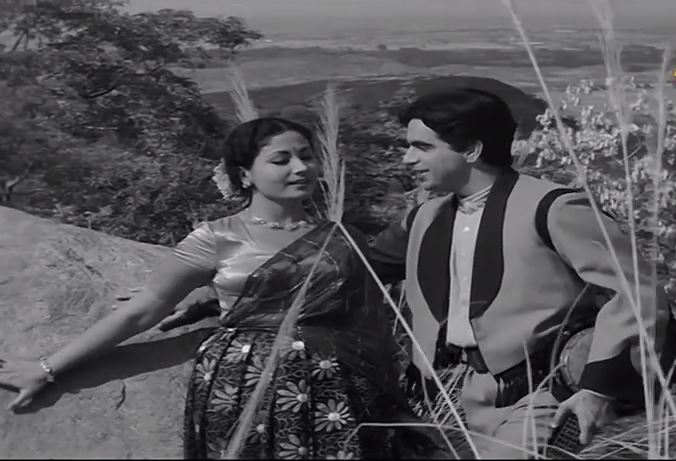
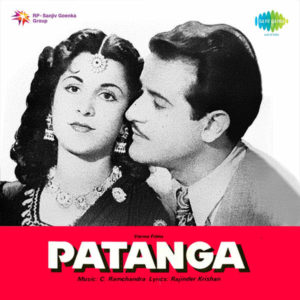 As I said, today’s song is from the 1949 Harnam Singh Rawail movie Patanga starring Nigar Sultana, Shyam, Yakub and Gope. The song is picturised on Nigar Sultana and Gope, sung by Shamshad Begum, on the lyrics of Rajendra Krishan and composition by C Ramchandra.
As I said, today’s song is from the 1949 Harnam Singh Rawail movie Patanga starring Nigar Sultana, Shyam, Yakub and Gope. The song is picturised on Nigar Sultana and Gope, sung by Shamshad Begum, on the lyrics of Rajendra Krishan and composition by C Ramchandra.
Please enjoy Shamshad Begum sing: Mere piya gaye Rangoon….
Man talking on phone: Hello,हिन्दुस्तान का देहरादून?
Hello,मैं रंगून से बोल रहा हूँ
मैं अपनी बीवी रेनुका देवी से बात करना चाहता हूँ
हां हां
श: मेरे पिया; हो मेरे पिया गये रंगून
किया है वहाँ से टेलीफ़ून
(तुम्हारी याद सताती है – २) जिया में आग लगाती है
मेरे पिया गये रंगून किया है वहाँ से टेलीफ़ून
(तुम्हारी याद सताती है)- २ जिया में आग लगाती है
चि: (हम छोड़ के हिन्दुस्तान (बहुत पछताये – २) – २
हुई भूल जो तुमको साथ ना लेकर आये – २
हम बर्मा की गलियों मैं और तुम हो देहरादून
(तुम्हारी याद सताती है – २) जिया में आग लगाती है
श: (मेरी भूख प्यास भी खो गये (गम के मारे- २) – २
मैं अधमुई सी हो गई ग़म के मारे – २
तुम बिन, साजन, जनवरी फ़रवरी बन गये मे और जून
(तुम्हारी याद सताती है – २) जिया में आग लगाती है
C: (अजी तुमसे बिछड़के हो गये (हम सन्यासी – २) – २
खा लेते हैं जो मिल जाये रूखी सूखी बासी – २
अजी लूंगी बाँध, के करें गुज़ारा भूल गये पतलून
(तुम्हारी याद सताती है – २) जिया में आग लगाती है
This Shamshad Begum song’s popularity doesn’t appear to be in any danger of fading away even after 68 years of its release. The same is the case with the singer despite her going into isolation after her husband’s untimely death in an accident when she was only 36 years old. I liked the way, the common people in India rhymed Teliphoon and Rajendra Krishan did well to rhyme it with Rangoon (Yangon), the capital of Burma. Burma and Rangoon always had fascination for us. This year Vishal Bhardwaj’s Rangoon was released starring Saif Ali Khan, Shahid Kapoor and Kangana Ranaut. Here in this song, it is not merely rhyming with Teliphoonn, but, the mention of Rangoon adds enigma to the song; viz, why would anyone go there considering that the grave of the Last Mughal Emperor in India is in Rangoon and he was exiled there by the British. All in all the song has a certain nostalgia about it, a strange pull, that connects what is believed to be a remote and arcane place (Rangoon/Burma) to Indian culture. We also cannot forget that our most loved cabaret dancer in the movies: Helen was born in Burma.
I hope you enjoyed it too.
Please await tomorrow’s song.
